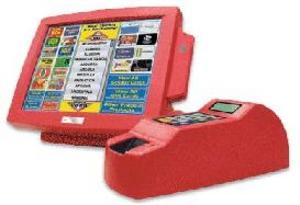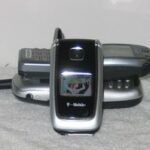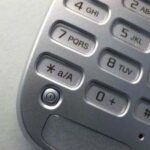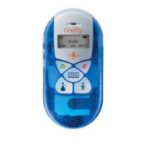What is a utility payment kiosk? It is a machine that is capable of accepting payments for utilities, mobile phones, cable television, cable internet and other services like refilling a prepaid debit card or adding minutes to a prepaid mobile phone. Most of them are stand-alone machines that resemble an ATM (automatic teller machine). Larger utility companies have their own in-house machine that you can use and pay no fee; this is a great option if you just want to pay your bill but don’t want to stand in a service line. Not all machines are going to offer the same services so scroll through the touch screen to see if your exact utility is listed.
I have used these types of kiosks to pay a variety of bills but I give strong warning that you shouldn’t wait until the last minute to pay a balance. Machines can go down, there can be server issues, the receiving company of the funds might be closed for maintenance or the store in which it is located could be closed for any number of reasons. I had that happen a couple of times and had to call the mobile phone company and explain that the “machine is broken. They did give me a 48 hour grace period for which I was grateful but the machine wasn’t fixed for five days so I ended up going to a branch store to pay it.
Capabilities: Pay by cash or with a credit card, eliminate service cut-off or termination of service, avoid waiting in line at a service center.
Pros: Easy to navigate screens, payment options, utility options, auto-post payment option, text message receipt verification when payment is applied to account, printed receipt from kiosk.
Cons: Terminated services may not be restored as quickly, per-transaction fees, account numbers or social security numbers required, if paying with cash the kiosk may not accept damaged or ‘questionable’ currency.
While the convenience of paying at a kiosk that is open 24 hours a day seems nice, there are some true downsides to it. The biggest one for me is the currency that it accepts; if your mobile phone bill is $57.00 (which you are going to pay a three to five dollar service fee on) and you have $80.00 with you in mixed bills but there are some that are not accepted by the machine you could end up a dollar or two short. What does that mean? You could get charged with a late fee by the provider for not paying the whole bill (or service termination for month to month plans). Never, under any circumstance, leave the machine in the middle of a transaction to get change or break a bill. If someone steps up to it they can access your personal information. If you are stuck in that situation you can swipe a credit or debit card to pay what is left on it to avoid service termination or having to pay another three to five dollar fee to pay the balance. Please note, most machines will not five you change, they will apply the left over balance to your next payment.
Operating a machine is easy but you do need to have your account number (or the full name, address, zip code and / social security number of the person you are paying for) to get things started. Each company is going to ask for a different amount of information; some will only ask that you enter the zip code of the billing address. If you are the least but concerned with privacy, don’t use one of these machines. To access my mobile phone account all I needed was my phone number and my zip code. That’s it. If someone wanted to get in to my personal information or try to access other accounts, that is all the information I needed. There is no way to eliminate this kind of transaction from happening so the mobile phone provider can’t block this type of transaction.
When you scroll through the screens and find the utility that you want to pay you enter your account number, phone number, name or birth date to get the process started. You should see your balance amount on the screen, if that is the amount you want to pay you select your payment option. Most machines do not accept checks {utility payment kiosks located inside utility centers have recently started accepting checks) so you will need cash or a credit / debit card. Be sure to double check your account information so that it is credited to the correct account; you can elect to have an email or text message sent when the payment is received by the company. Likewise, you can have a receipt printed. This is a complete necessity as it will have the transaction number on it in case there are any payment processing issues.
The service fees can range from three to five dollars per transaction so if you are doing multiple payments you are going to have to pay a fee for each one. Each machine is going to have different capabilities and limitations; some of them can do an auto-post for instant payment (usually only with cash) while others can take up to 48 hours to completely process so while your utility payment is “paid” the funds may not be withdrawn from your bank account (when using a debit card) or posted to a credit card so be mindful of your available balance. The payment kiosks are convenient but they can be costly if you are doing them every month. If you are paying two bills a month and the fee is three dollars per transaction, you are essentially handing over an extra $72.00 a year. In some cases you have no other alternative. Companies like Cricket so not offer paper billing so the “three dollar fee” applies to machine payments or payments made at an authorized Cricket retailer.
Some machines are all-inclusive and have payment options as well as the ability to purchase lottery tickets and withdrawal cash from the ATM portion. While these are the most convenient they are the machines that are most often targeted by “card skimmers”. These are devices placed within the card slide slot that copy information so your credit or debit card can be accessed remotely. A more elaborate system uses a small micro camera above the key pad where you enter your personal identification number to visually record or transmit the information to a remote server. Card skimming can lead to identity theft and a plethora of other cyber crimes. If you see something that doesn’t look right at an ATM or payment machine, call the toll free service number on the machine or contact the bank about it.
Utility and payment kiosks have been a staple in a society where time matters; paying an extra three to five dollars to pay a bill might not seem like a lot but over the course of a year it does add up. Take advantage of free payment kiosks that larger utility companies and businesses offer before using one of the pay-per-transaction machines as a last resort.
Sources:
http://www.kiosk.com/case-studies/cricket.php
http://www.identitytheft.info/credit-card-skimmer-pictures.aspx





